Difference Between Fat Lime and Hydraulic Lime | What Is Fat Lime | What Is Hydraulic Lime
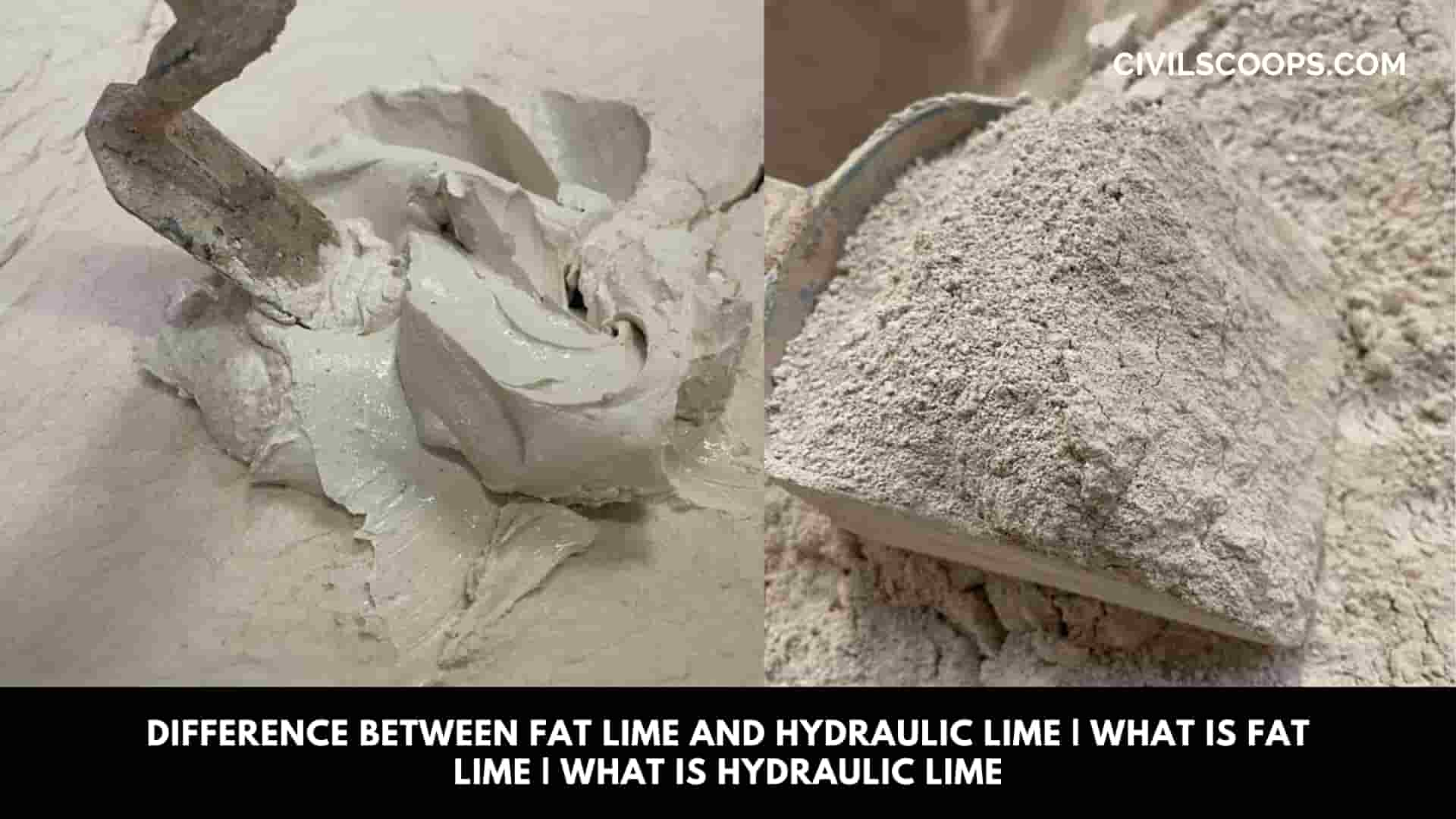
Table of Contents
What Is Fat Lime?

Fat lime is also known as Rich lime, High calcium lime, Pure lime, White lime. It is obtained by calculating limestones.
When water is added to this lime, it produces hissing sound, a lot of heat is liberated it cracks and its volume is increased by 2-3 times the presence of air is essential for its setting. Hence it does not set.
- Under water.
- Below Ground.
- In interior joints of a thick wall.
It is used for white-washing, plastering and filling thin joints. Fat lime is highly plastic and is soluble in water.
To improve its hydraulic property, fat lime is mixed with surkhi (Brick powder) such mortar can set even in the absence of air and hence can be used for joints of thick, walls, or works below ground.
What Is Hydraulic Lime?
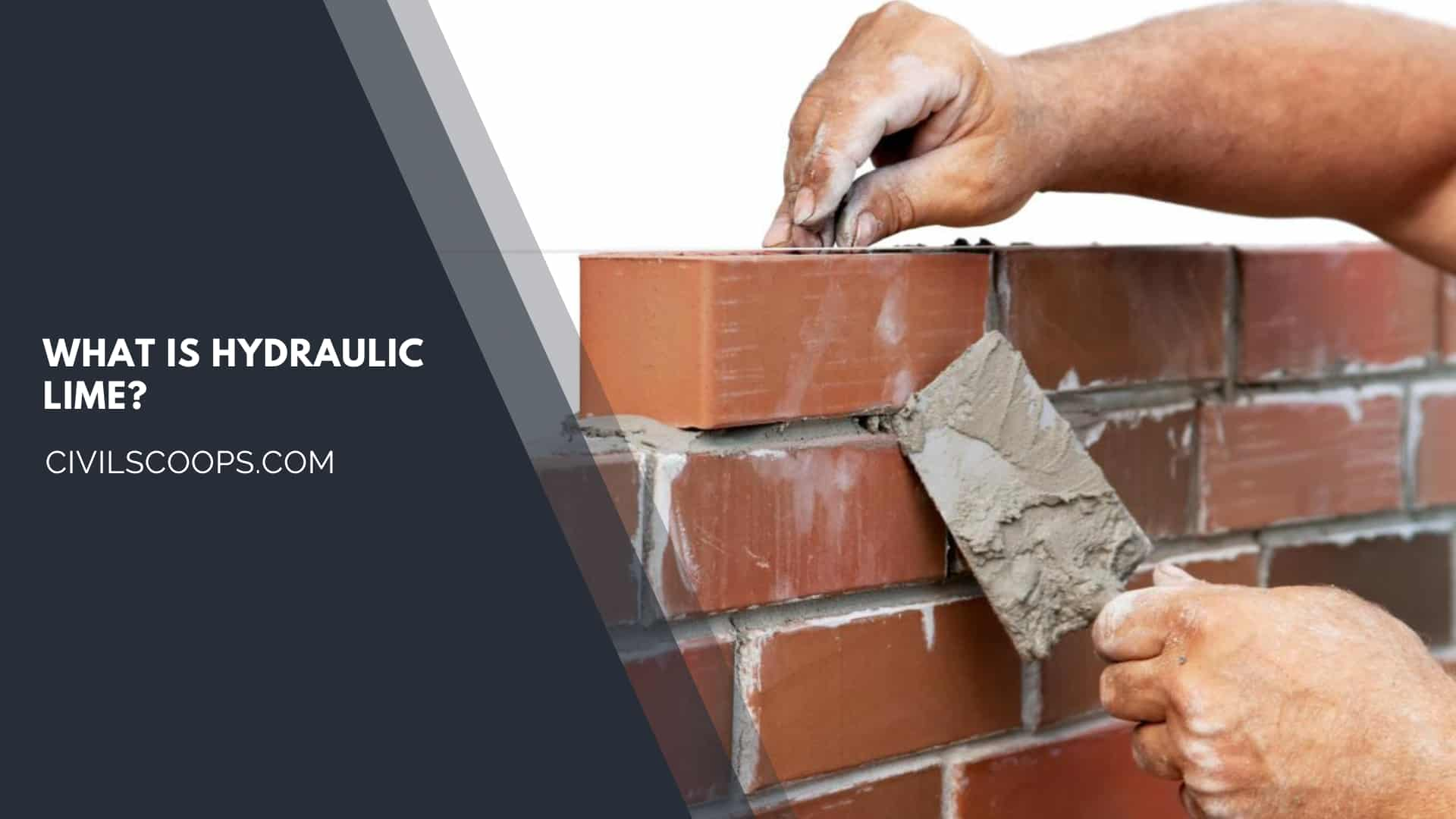
This lime does not require Co2 from the atmosphere for the setting. Hence it can set under-water. It is used in construction works. Strength is required.
This lime is not suitable for plaster-work because any unslacked particle may slake after some days causting blistering in plaster.
To improve this property this lime is ground to powder and then mixed with sand the mortar thus prepared is kept in a heap for about a week, and it is ground again. Such mortar prepared from hydraulic lime suitable for plaster-work.
Depending upon the percentage of clay content, hydraulic lime is divided into the following types,
Type of Hydraulic Lime.
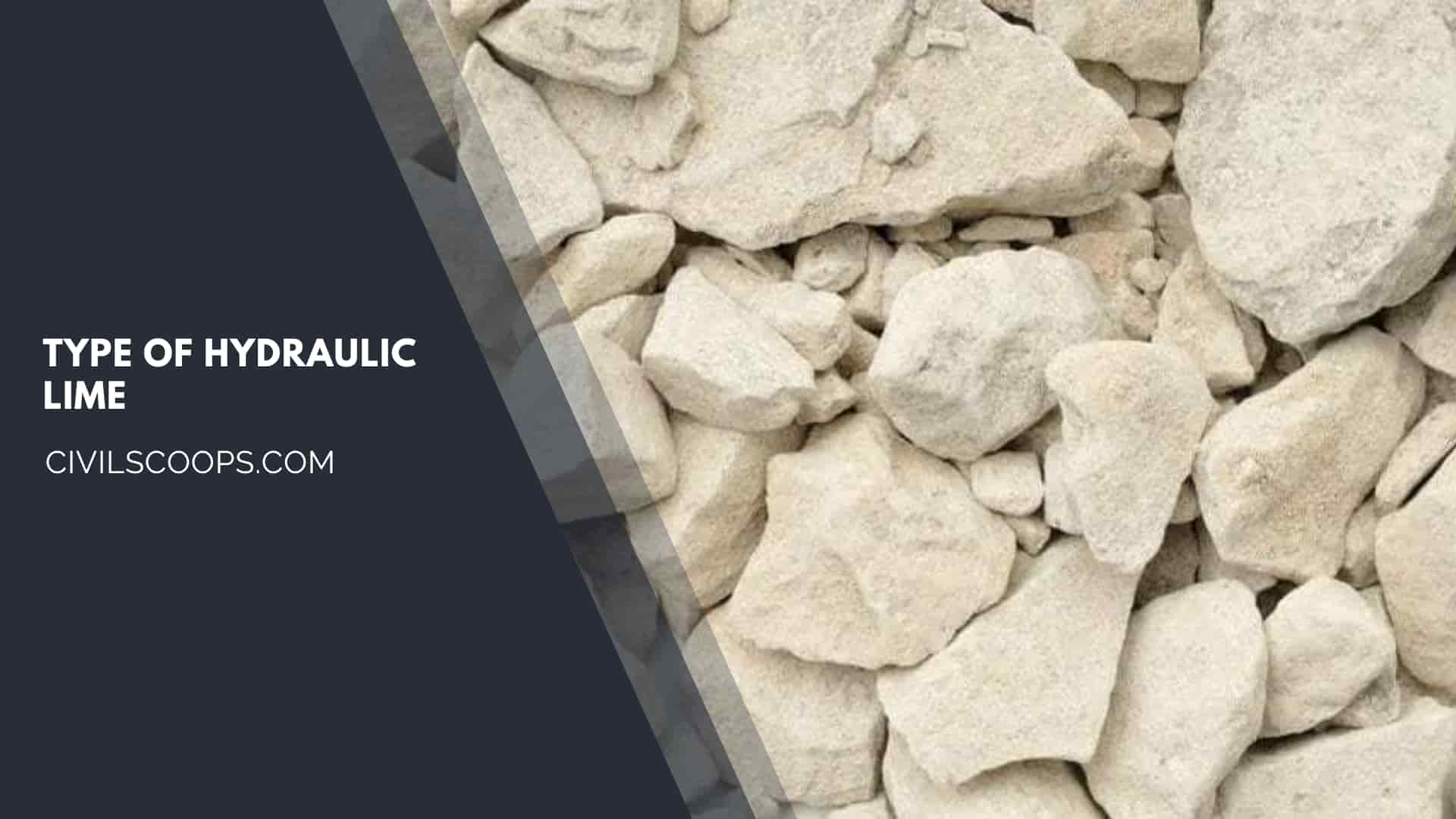
- Eminently Hydraulic Lime.
- Moderately Hydraulic Lime.
- Feebly Hydraulic Lime.
1. Eminently Hydraulic Lime:
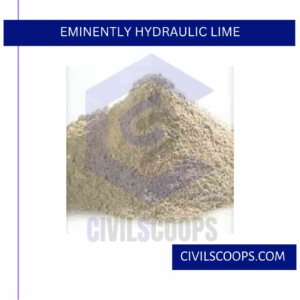
- Clay content – 21 to 30%
- Slaking – Slow with difficulty
- Setting – About 24 hours
- Hyraulicity – Eminent
- Uses – Can be used in important masonry works in place of cement
2. Moderately Hydraulic Lime:

- Clay content – 11 to 20%
- Slaking – After 1.5 hours
- Setting – About one week
- Hyraulicity – Moderate
- Uses – Masonry works
3. Feebly Hydraulic Lime:
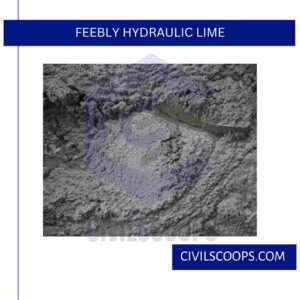
- Clay content – 05 to 10%
- Slaking – After few minutes
- Setting – Sets in water after about 3 weeks
- Hyraulicity – Feeble
- Uses – Ordinary masonry works.
Difference Between Fat Lime and Hydraulic Lime
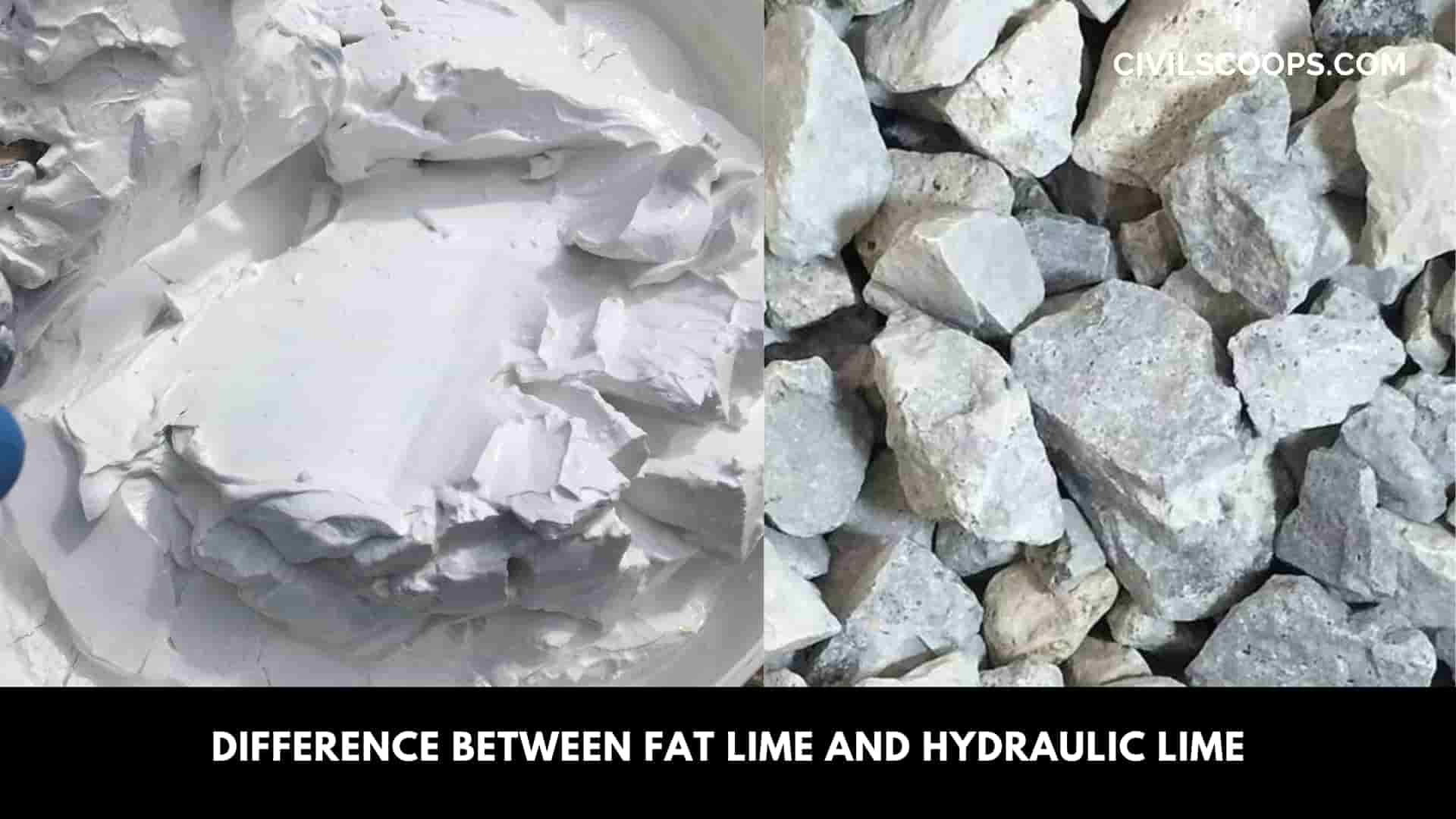
[su_table responsive=”yes” alternate=”no”]
| Use | Plastering, white washing preparing and mortar with surkhi mix. |
Suitable for thick walls, works below ground in damp condition
|
| Strength | It is not strong and hence can not be used where strength is requierd. |
It is strong and can be used like cement
|
| Slaking | Slakes vigorously with hissing sound and cracking volume increased by 2 to 3 times slaking continues upto 3-4 hours. |
Not much heat is liberated. No hissing sound or cracking volume increases by 1.2 times slaking continues up to 1-2 days
|
| Setting | Sets slowly in presents of air. Absorbs CO2 from atmosphere and from CACO3. It does not have hydraulicity and hence can not set under water. |
Sets under water – CaO content sets like fat lime calcium silicate & crystalline structures are formed they set like cement. It possesses hydraulidty.
|
| Composition | More Percentage of CaO clay content less then 5% |
Ca + clay content from 5 to 30 % and some % of iron oxide
|
[/su_table]
[su_box title=”FAQ” style=”default” box_color=”#333333″ title_color=”#FFFFFF” radius=”3″ class=”” id=””]
Difference Between Fat Lime and Hydraulic Lime
Hydraulic limes are available as a bagged powder and in differing degrees of strength. Non Hydraulic Limes have various names such as Fat Lime, Lime Putty, Air Lime and set by carbonation. This causes a much slower set and the lime remains softer and more breathable.
What Is Fat Lime?
Hydrated lime also known as fat lime or lime putty. This is type of lime is often used in the restoration work of historical buildings and is often specified for buildings with listed status. Hydrated lime products are produced using lime putty as the binder and are usually supplied as a wet mix.
What Is Hydraulic Lime Used For?
Hydraulic limes set by hydrolysis, a reaction caused by water. It causes a faster and harder set, therefore these limes are more often used for exterior work, especially in exposed or damp conditions. Hydraulic limes are available as a bagged powder and in differing degrees of strength.
What Is Hydraulic Lime Mortar?
Hydraulic lime is made from an impure limestone and sets through hydrolysis, a reaction caused by water. Hydraulic lime provides a faster initial set and greater compressive strength compared to non-hydraulic lime and will set in more extreme conditions including under water.
What Is the Difference Between Hydrated Lime and Hydraulic Lime?
Hydraulic limes (so called because they set under water) are made in the same way as non-hydraulic lime but using different limestone. They are sold as hydrated lime and have an initial set when water is added, followed by hardening while they absorb carbon dioxide.
[/su_box]
[su_note note_color=”#F2F2F2 ” text_color=”#333333″ radius=”3″ class=”” id=””]
Like this post? Share it with your friends!
Suggested Read –
- What Is Transportation Engineering | Major Disciplines of Transportation Engineering | What Do Transportation Engineers Do
- All About Waffle Slab Foundation | What is Waffle Slab Foundation | Waffle Slab Foundation Pros and Cons | Features of Waffle Slab Foundation
- Types of Roof Tiles | Tile Roof Replacement | Tile Installation Cost | Roofing Tile Price | Ceramic Tile Price Per Square Foot | Tile Installation Factors
- What Is Pad Foundation | Failure of Pad Foundation | Pad Foundation Detail | Types of Pad Foundation | Design of the Pad Footing Depends on Several Factors
- What Is Mat Foundation | Mat Slab Foundation| Advantage and Disadvantage of Mat Slab Foundation | Types of Mat Foundation | Where Mat Foundation Is Used
[/su_note]
Originally posted 2023-05-11 11:09:35.
